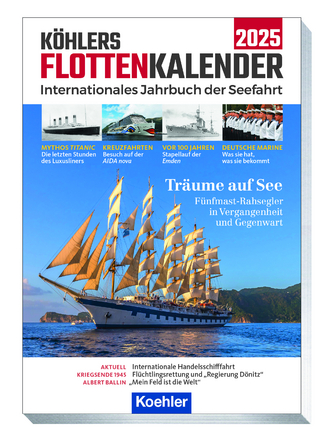
The Wilson Line
Seiten
2000
The History Press Ltd (Verlag)
978-0-7524-1728-8 (ISBN)
The History Press Ltd (Verlag)
978-0-7524-1728-8 (ISBN)
A history of the Wilson Line
Founded in the early years of the 19th century, the Wilson Line became the largest privately-owned steamship fleet in the world. Based in Hull, its main trade was to and from Scandinavia and the Baltic States, although the Wilson Line also carried cargoes to the USA, the Mediterranean, and India. Emigrants were an important part of the company's business. Large numbers of Norwegians, Swedes and Jewish refugees of the Tsarist pogroms were brought into Hull, transported overland to Liverpool and shipped to America. In the 1890s Wilson Line ships carried more cargo to the USA than the ships of any other line. By 1919, losses from the fleet were such that the line was put up for sale. Bought by Ellerman, the name changed slightly but the old ways continued. Ellerman's Wilson Line remained independent of the rest of the Ellerman empire. Rebuilding the fleet was a priority but trading conditions were difficult - with too many ships chasing the available cargo. The Second World War saw a reduction in fleet size from 35 to just 9 and another rebuilding programme got under way in 1945. The once-lucrative American trade ceased in 1961 and the Wilson Line began to use the roll-on, roll-off ferries for its Gothenburg service in 1966. In 1983, then entire Ellerman Group was put up for sale. By 1987, the company was in the hands of Trafalgar House and called Cunard-Ellerman. In 1991 P&O purchased the Ellerman Group container business and sold the remaining four ships. Every trace of Wilsons, once the largest independent steamship company in the world, had now vanished.
Founded in the early years of the 19th century, the Wilson Line became the largest privately-owned steamship fleet in the world. Based in Hull, its main trade was to and from Scandinavia and the Baltic States, although the Wilson Line also carried cargoes to the USA, the Mediterranean, and India. Emigrants were an important part of the company's business. Large numbers of Norwegians, Swedes and Jewish refugees of the Tsarist pogroms were brought into Hull, transported overland to Liverpool and shipped to America. In the 1890s Wilson Line ships carried more cargo to the USA than the ships of any other line. By 1919, losses from the fleet were such that the line was put up for sale. Bought by Ellerman, the name changed slightly but the old ways continued. Ellerman's Wilson Line remained independent of the rest of the Ellerman empire. Rebuilding the fleet was a priority but trading conditions were difficult - with too many ships chasing the available cargo. The Second World War saw a reduction in fleet size from 35 to just 9 and another rebuilding programme got under way in 1945. The once-lucrative American trade ceased in 1961 and the Wilson Line began to use the roll-on, roll-off ferries for its Gothenburg service in 1966. In 1983, then entire Ellerman Group was put up for sale. By 1987, the company was in the hands of Trafalgar House and called Cunard-Ellerman. In 1991 P&O purchased the Ellerman Group container business and sold the remaining four ships. Every trace of Wilsons, once the largest independent steamship company in the world, had now vanished.
| Erscheint lt. Verlag | 1.2.2000 |
|---|---|
| Verlagsort | Stroud |
| Sprache | englisch |
| Maße | 172 x 240 mm |
| Gewicht | 300 g |
| Themenwelt | Natur / Technik ► Fahrzeuge / Flugzeuge / Schiffe ► Schiffe |
| Technik | |
| ISBN-10 | 0-7524-1728-2 / 0752417282 |
| ISBN-13 | 978-0-7524-1728-8 / 9780752417288 |
| Zustand | Neuware |
| Haben Sie eine Frage zum Produkt? |
Mehr entdecken
aus dem Bereich
aus dem Bereich
internationales Jahrbuch der Seefahrt
Buch | Softcover (2024)
Koehler in Maximilian Verlag GmbH & Co. KG
23,95 €


